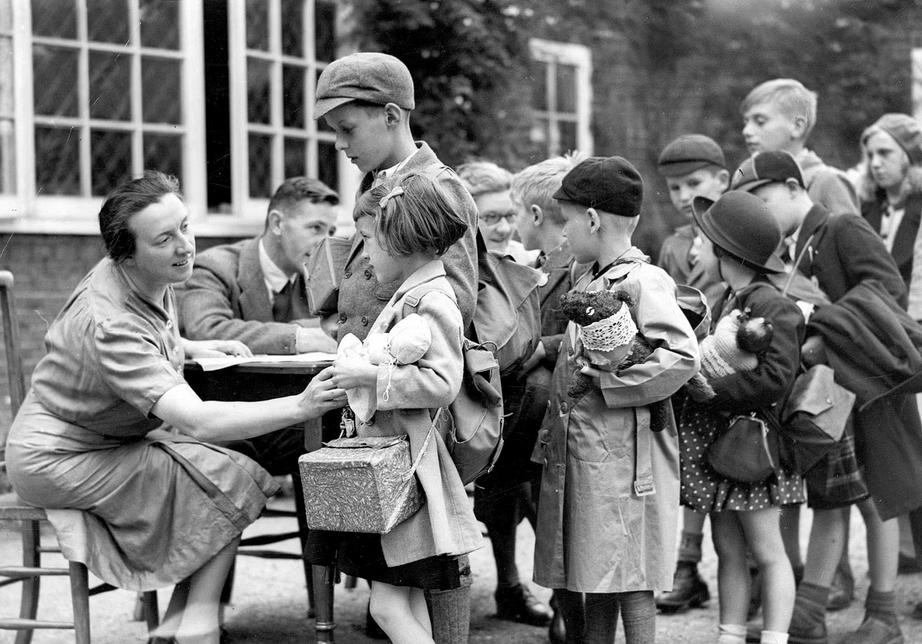
Figure 1.--Here we see evacuee children arriving at an undefined reception center and are bein registered. In this case it was done outdoors and appently only a small number of children were assigned to this location. Notice all the gs mask boxes. |

|
Very competent, trained and experienced peoole operated the British rail system. Trials could be run. This expalins why the evacuation process fespite the huge numbers out of the cities went smoothly. Reception was handled by well-meaning, but inexperienced volunteers. There were thus, inevitably problems. There was no way of running trials with hundreds of children arriving at small communities throughout Brritain. As the trains moved out from the cities, there were breakdowns in communications. Some reception areas were overwhelmed with the number of children arriving. East Anglian ports received many children evacuated from Dagenham. And ports were not safe places to be. Some reception areas received far more evacuees than they had been told to expect. Other received fewer or in some cases none of the children at all Anglesey was told to prepare for 625 children and 2,468 arrived. Pwllheli in North Wales, was not told to prepare for any evacuees, but 400 arrived. These incidents, however, were the exceptions. For the most part the volunteers involved did a wonderful job of processing the children and getting them into homes. They had lists of homes for thev children prepared in advance. Most willigly accepted requests. In some cases there was some compulsion involved. Upon arriving in reception train stations, the evacuee children were taken to a billeting center which had been set up, usually in schools, churches, or community halls. Here they were registered and assigned their host families. Billeting officers matched up evacuees with the best available hosts. They , took into account factors such as the size of the homes and room for children and them the evacuee siblings, age, and special needs. We are not entirely sure how this worked because at least at some places the host families selected the children among the arrivals.
Navigate the CIH World War II Section:
[Return to the Main World War II British evacue reception page]
[Return to the Main World War II British evacuation page]
[Return to the Main World War II British evacuation page]
[Return to Main World War II aerial campaign page]
[Return to Main World War II page]
[About Us]
[Aftermath]
[Biographies]
[Campaigns]
[Children]
[Countries]
[Deciding factors]
[Diplomacy]
[Geo-political crisis]
[Economics]
[Home front]
[Intelligence]
[Military forces]
[POWs]
[Resistance]
[Race]
[Refugees]
[Technology]
[Totalitarian powers]
[Bibliographies]
[Contributions]
[FAQs]
[Images]
[Links]
[Registration]
[Tools]
[Return to Main World War II page]
[Return to Main war essay page]
[Return to CIH Home page]
